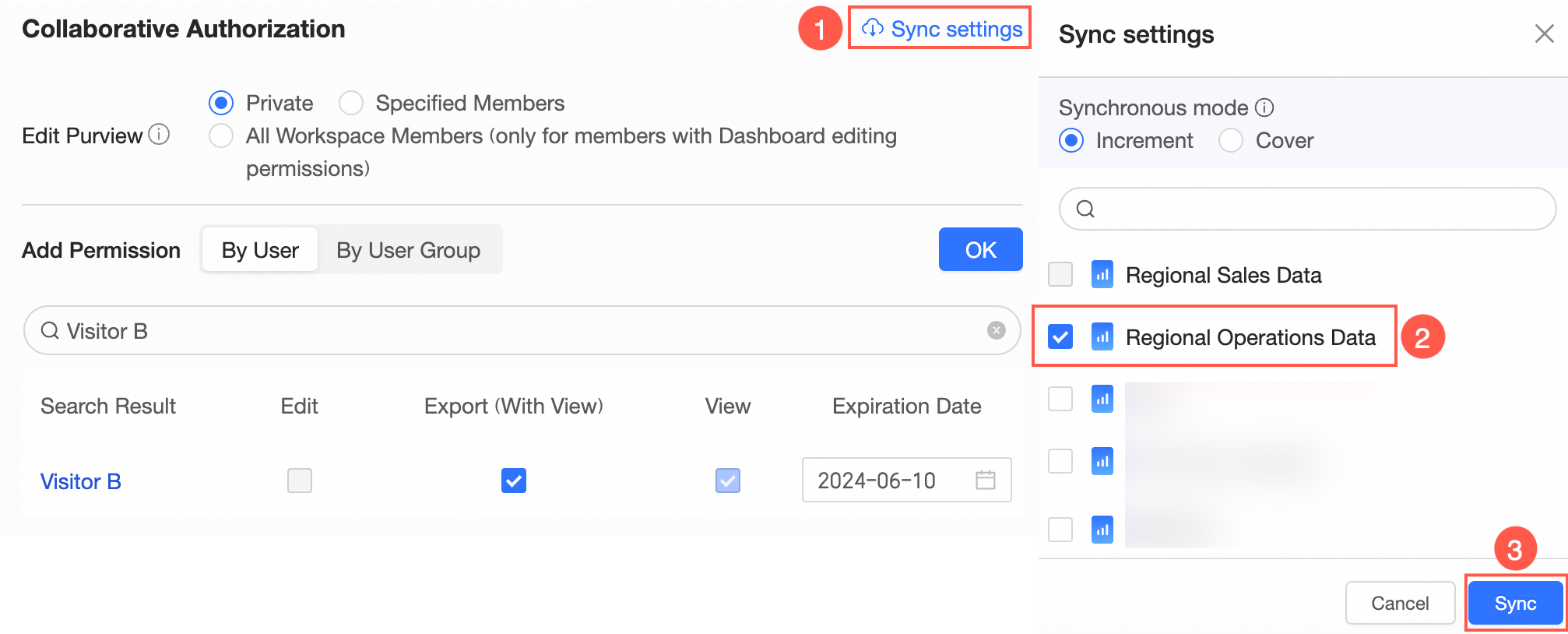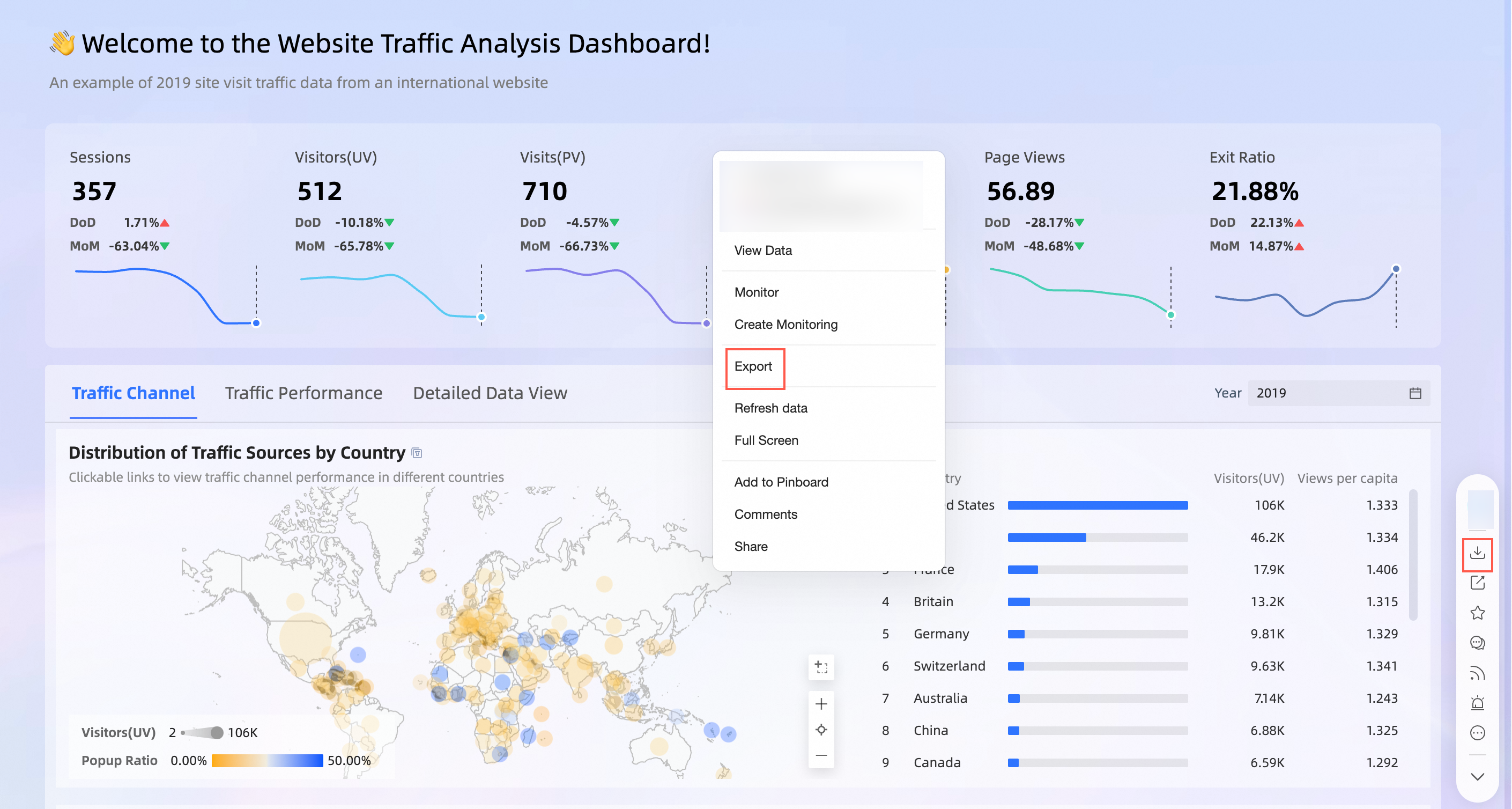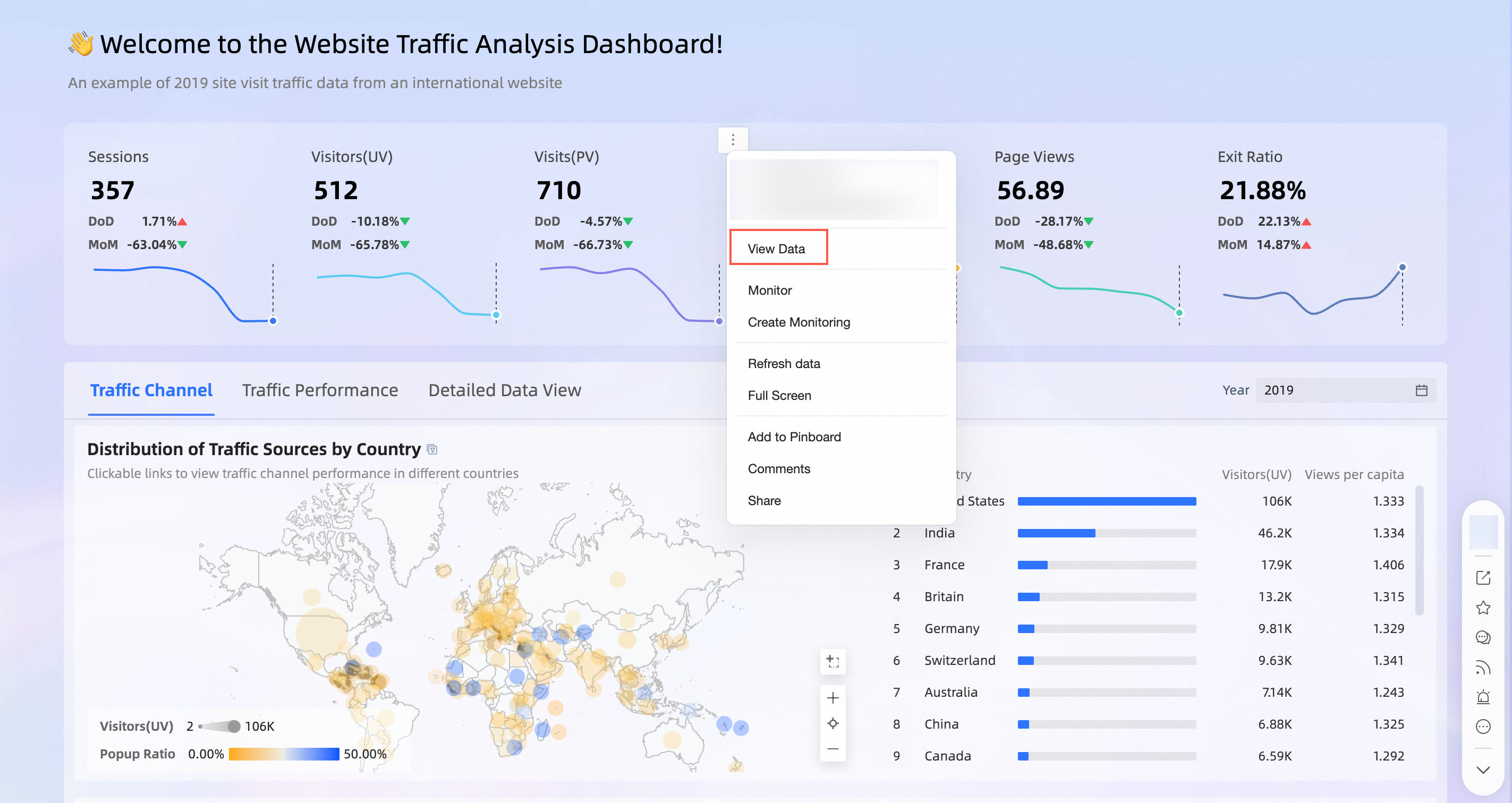Permission administrators can grant users the permissions to edit dashboards, and view or export the components of dashboards.
Background information
When a permission administrator grants permissions to a user, the permission attributes in the Collaborative state and the Private state are different, as shown in the following figure.

Take note of the following points on collaborative authorization:
Edit: If a user is granted the Edit permission on a specified dashboard, the user can edit the dashboard, and view and export the components of the dashboard.
Export (Including View): If a user is granted the Export (Including View) permission on a specified dashboard, the user can view and export the components of the dashboard.
View: If a user is granted the View permission on a specified dashboard, the user can only view the components of the dashboard.
Use scenarios
Scenario | Expected effect |
This allows Analyst A (Analyst A is in the same space as the resource) to edit and unlink dashboards in the workspace. | |
Scenario 2: Grant the export and view permissions on components in a dashboard |
|
Scenario 1: Grant a user the permissions to edit a specified dashboard
Permission administrators can grant an analyst in the workspace the permissions to edit a specified dashboard only when Specified Members or All Workspace Members(except members with the view permission) is selected for Editing Permission in the Collaborative Authorization pane.
On the Centralized Authorization page, select the target workspace and dashboard resources.
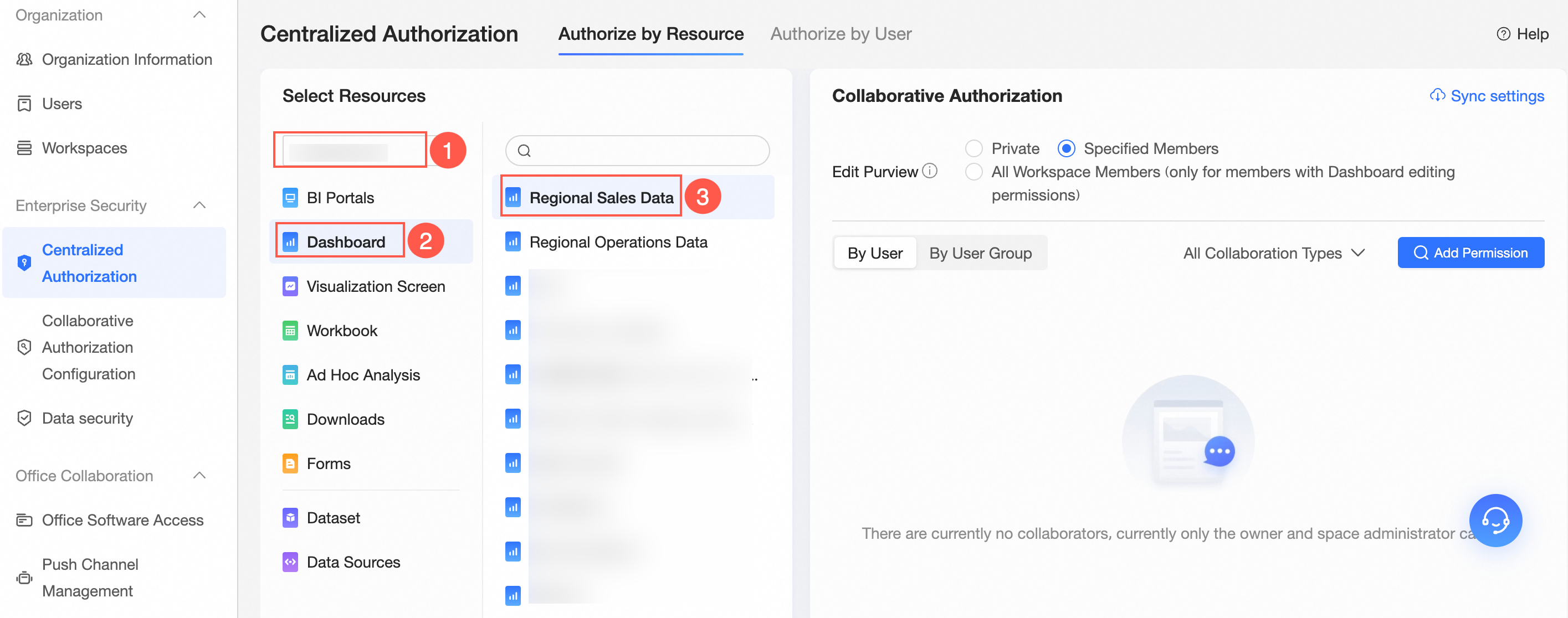
On the Collaboration Authorization page, select Edit Permission and grant permissions.
The following figure shows that Specified Members is selected for Editing Permission and Analyst A is granted the Edit permission.
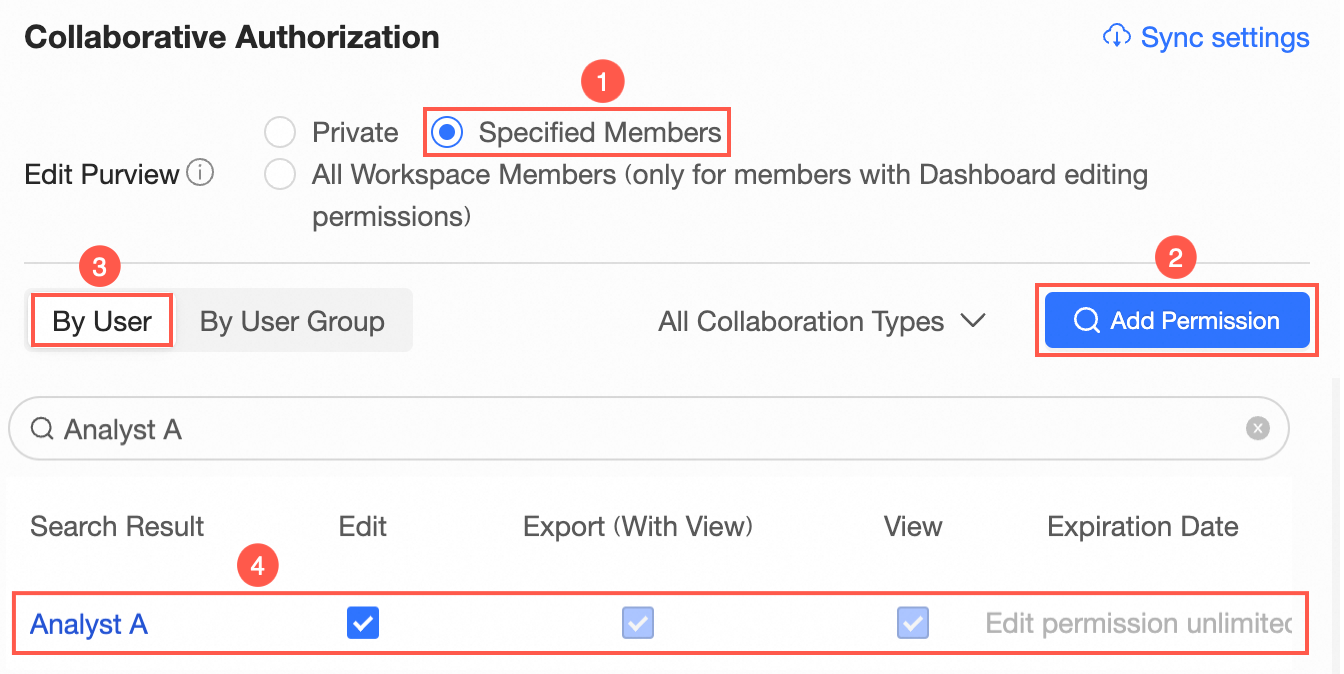 Note
NoteAfter you select Edit for Analyst A, Analyst A can also view and export the components of the dashboard. You can also select Export (Including View) or View later to change the permissions that are granted to Analyst A on the dashboard.
Optional: Synchronize permissions.
If Analyst A needs to edit another dashboard in the workspace, you can click Synchronization Settings in the Collaborative Authorization pane. Then, select the dashboard that Analyst A needs to edit and click Sync in the Synchronization Settings panel.
For example, Analyst A is granted the Edit permission on Turnover Analysis. After the permission is synchronized, Analyst A can also edit the Regional Operations Data dashboard.
 Note
NoteSynchronization Mode supports Incremental Synchronization and Overwrite Synchronization.
Incremental Synchronization: The original permissions of the resources to be synchronized are not affected.
Overwrite Synchronization: clears the original permissions of the resource to be synchronized and overwrites the permissions of the resource with the permissions of the current resource.
Scenario 2: Grant a user the permissions to view and export the components of a specified dashboard
Permission administrator allows you to grant visitors the permissions to view or export components in a dashboard.
In this example, Visitor B is granted the Export (Including View) permission on the Turnover Analysis dashboard.
On the Centralized Authorization page, select the target workspace and dashboard resources.
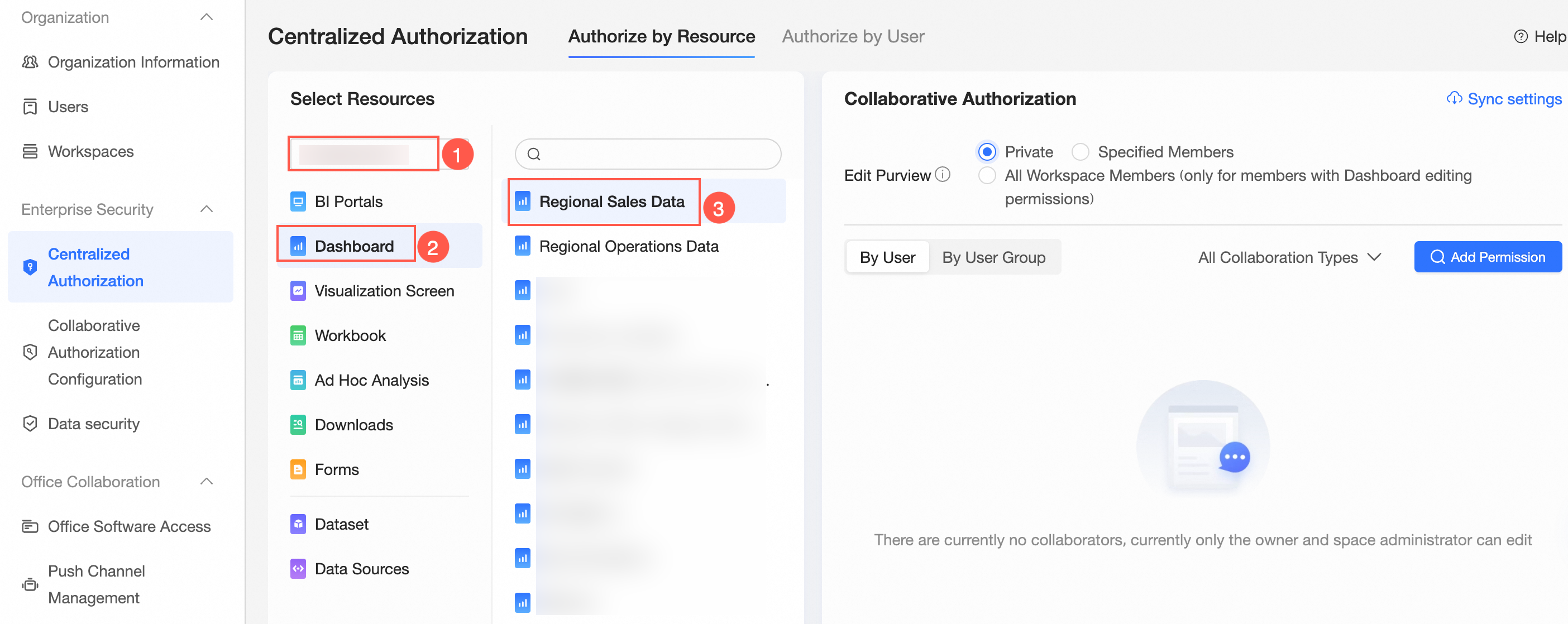
On the Collaboration Authorization page, select Edit Permission and grant permissions.
The following figure shows that Private is selected for Editing Permission and Visitor B is granted the permissions to export dashboards.
 Note
NoteYou can also select View for Visitor B. If you select View, Visitor B can only view the dashboard.
Optional: Synchronize permissions.
If Visitor B needs to export the components of another dashboard in the workspace, you can click Synchronization Settings in the Collaborative Authorization pane. Then, select the dashboard whose components Visitor B needs to export and click Sync in the Synchronization Settings panel.
